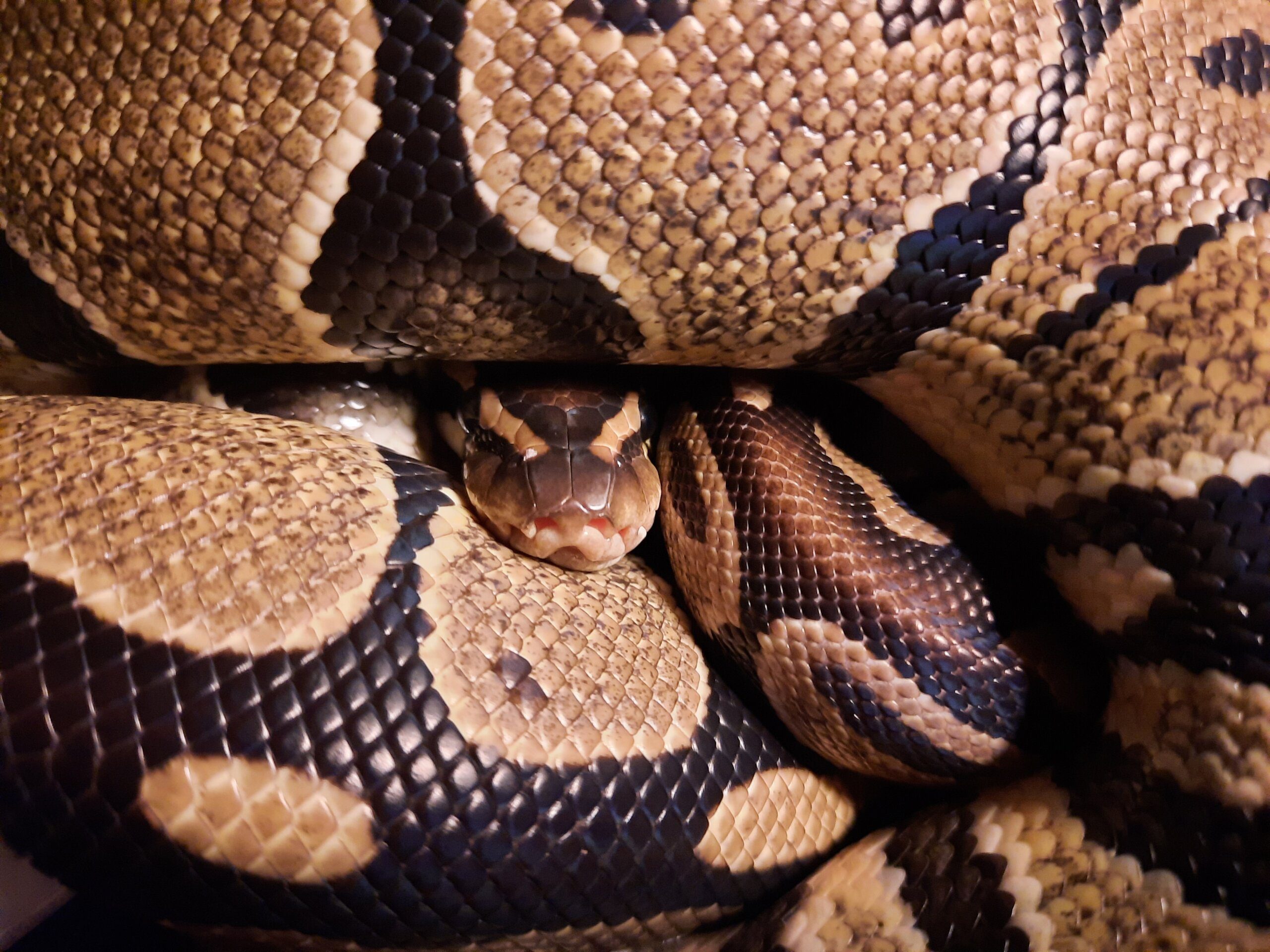Imagine the joy of taking a leisurely stroll through the park with an unusual companion by your side – a capybara on a leash! These fascinating creatures, native to South America, have become increasingly popular as pets in recent years. With their friendly nature and gentle demeanor, capybaras have captured the hearts of animal lovers worldwide. As you guide your capybara on a walk, you’ll not only enjoy the companionship of a truly unique friend, but you’ll also gain a deeper appreciation for the wonders of the animal kingdom.

Choosing a Capybara as a Pet
Capybaras make for an unusual and fascinating pet choice. With their friendly and social nature, they can quickly become a beloved part of your family. However, before bringing a capybara into your home, it’s important to understand their behavior, research local regulations and laws, and prepare your home to create a safe and comfortable environment for your new furry friend.
Understanding Capybara Behavior
Capybaras are highly social animals that thrive on companionship. They have a strong need for interaction and can become lonely if left alone for long periods. It’s crucial to provide them with adequate socialization to ensure their well-being. They are also semi-aquatic creatures and require access to water for swimming and cooling off. Additionally, capybaras have a natural instinct to explore, which can be channeled through activities like leash walking and outdoor adventures.
Researching Local Regulations and Laws
Before bringing a capybara into your home, it’s essential to research the local regulations and laws regarding exotic pets. Some areas have specific restrictions on owning capybaras or require permits and certifications. It’s crucial to comply with these regulations to ensure the welfare of your pet and avoid legal issues. Reach out to your local authorities or consult an exotic pet veterinarian to gather information about the specific requirements in your area.
Preparing Your Home for a Capybara
Creating a suitable living environment for your capybara is key to their happiness and well-being. Capybaras require ample space to roam and explore, so having a sizeable enclosed yard or access to parks and open spaces is beneficial. Ensure that your home is capybara-proofed by securing fences, covering any potential escape routes, and removing any toxic plants or hazards. Additionally, create a comfortable indoor space with bedding, hiding spots, and a shallow pool for them to enjoy.
Selecting the Right Leash and Equipment
When it comes to leash walking your capybara, selecting the right equipment is crucial for both their safety and your convenience. The key items you’ll need include a proper leash, harness or collar, and additional safety equipment to ensure a successful and enjoyable leash walking experience.
The Importance of a Proper Leash
Choosing a leash specifically designed for capybaras is essential. Look for a long leash made of durable materials that can withstand their strength. A strong, yet lightweight leash will provide you with control while allowing your capybara some freedom to explore.
Choosing a Harness vs. Collar
When it comes to restraining your capybara on a leash, using a harness is generally recommended over a collar. Collars can put pressure on the capybara’s neck, potentially causing injury or discomfort. A properly fitted harness evenly distributes the pressure and offers better control without causing harm.
Sizing the Leash for Your Capybara
Ensure that the leash you choose is long enough to give your capybara the freedom to move comfortably. Capybaras are known for their love of water, so a longer leash will allow them to explore while still being under your control. Aim for a leash length of at least 10-15 feet to accommodate their natural curiosity and need to explore their surroundings.
Considering Additional Safety Equipment
In addition to a leash and harness, it’s a good idea to consider additional safety equipment to ensure the well-being of your capybara during leash walks. Depending on your location and the terrain you’ll be walking on, you may want to invest in paw protectors to shield their sensitive footpads. Additionally, a reflective vest or collar can enhance their visibility and safety, particularly during low-light conditions or when walking near roads.
Introducing Your Capybara to the Leash
Introducing your capybara to the leash requires patience, positive reinforcement, and a gradual approach. Creating a positive association with the leash will help your capybara see it as something enjoyable and not a source of stress or restriction.
Creating a Positive Association with the Leash
Start by introducing the leash to your capybara in a calm and familiar environment. Place the leash near their bedding or in an area they frequently visit. Allow them to sniff and investigate the leash without any pressure or restraint. During this time, offer treats and praise to create a positive association with the presence of the leash.
Gradually Introducing the Leash to Your Capybara
Once your capybara is comfortable with the presence of the leash, you can begin attaching it to their harness or collar for short periods of time. Start by allowing them to wear the leash and move around freely indoors. Observe their behavior and monitor their comfort level. Gradually increase the duration of wearing the leash to get them accustomed to the feeling of being tethered.
Using Positive Reinforcement Techniques
Throughout the leash introduction process, positive reinforcement is essential. Reward your capybara with treats, praise, and affection whenever they display calm behavior and show a willingness to engage with the leash. This positive association will help build trust and make the leash walking experience a positive one for both you and your capybara.
Mastering Basic Leash Walking Skills
Once your capybara is comfortable wearing the leash indoors, it’s time to start teaching them basic leash walking skills. With patience, consistency, and positive reinforcement, you can help your capybara become a confident and well-behaved leash walker.
Teaching Your Capybara to Walk on a Loose Leash
When walking your capybara on a leash, it’s important to encourage them to walk on a loose leash rather than pulling or tugging. Begin in a controlled environment, such as your backyard, where distractions are minimal. Walk slowly and encourage your capybara to follow along, rewarding them with treats and praise. If they start to pull, stop walking and wait for them to loosen the tension on the leash before continuing.
Encouraging Good Leash Walking Behavior
Positive reinforcement is key to encouraging good leash walking behavior in your capybara. Praise and reward them whenever they walk calmly and stay by your side. Using a clicker or a verbal cue, such as “heel,” can also be helpful in teaching them to walk beside you. Gradually increase the level of difficulty by introducing more distractions during your walks, such as other animals or unfamiliar sounds, and continue to reward their good behavior.

Addressing Common Challenges
While leash walking with your capybara can be a rewarding experience, it’s important to address common challenges that may arise during training. Some capybaras may initially resist wearing a leash or have difficulty walking on a leash in unfamiliar environments. Be patient, reinforce positive behavior, and seek professional guidance if needed. Consistency, patience, and understanding will help you overcome these challenges and develop a strong bond with your pet.
Exploring the Outdoors with Your Capybara
Once your capybara has mastered the basic leash walking skills, it’s time to venture outside and explore the wonders of the great outdoors together. However, there are a few factors to consider to ensure the safety and well-being of your capybara during outdoor adventures.
Choosing Safe Outdoor Locations
When selecting outdoor locations for your capybara, prioritize safety and consider their needs. Look for areas with secure fences or enclosures to prevent escapes. Parks, nature trails, or open spaces with minimal vehicle traffic and a low risk of encounters with aggressive animals are ideal. Avoid areas with excessive noise or crowded environments that may overwhelm your capybara and cause unnecessary stress.
Considering Weather Conditions
Taking into account the weather conditions is crucial for outdoor activities with your capybara. Capybaras are native to South America and thrive in warm, tropical climates. Avoid taking your capybara out in extreme temperatures or during inclement weather such as heavy rain, snow, or thunderstorms. Ensure your capybara has access to shade and fresh water to stay cool and hydrated during hot weather.
Supervising Your Capybara at All Times
Supervision is vital when your capybara is outdoors on a leash. Keep a close eye on them to ensure their safety and prevent any potential accidents or encounters with harmful wildlife. Even the most well-trained capybara can become startled or anxious in unfamiliar environments, so offering reassurance and guidance throughout the outdoor experience is important.
Leash Walking Etiquette and Safety Tips
When taking your capybara for a leash walk in public spaces, it’s crucial to be considerate of others and maintain their safety. Adhering to leash walking etiquette and implementing safety tips will help create a positive experience for everyone involved.
Leash Walking in Public Spaces
Before taking your capybara to a public space, familiarize yourself with the rules and regulations regarding leash walking in that area. Some parks or nature reserves may have specific guidelines or designated areas for pets. Always keep your capybara on a leash, and be prepared to clean up after them if they make a mess.
Avoiding Negative Interactions with Other Animals
While your capybara may be friendly and social, it’s essential to be cautious when encountering other animals during leash walks. Always keep a safe distance from unfamiliar dogs, as their unpredictable behavior may startle or agitate your capybara. Similarly, avoid allowing your capybara to approach or interact with wild animals, as this may lead to injury or disease transmission.

Preventing Escapes and Stays
Capybaras have a natural curiosity and agility, which can sometimes lead to attempted escapes or extended stays in one place during leash walks. Ensure that your capybara’s leash is securely attached to their harness or collar and monitor their behavior closely. If you notice your capybara displaying signs of wanting to escape or becoming fixated on a particular area, gently redirect their attention and continue walking.
Maintaining a Healthy Lifestyle for Your Capybara
To ensure your capybara leads a healthy and fulfilling life, it’s important to focus on regular exercise, a balanced diet, and monitoring their overall health.
Importance of Regular Exercise for Capybaras
Capybaras are active creatures that require regular exercise to maintain their physical and mental well-being. Leash walking is a fantastic form of exercise for them, providing opportunities for exploration and physical activity. Alongside leash walking, consider diversifying their exercise routine with swimming, creating obstacle courses at home, or engaging in interactive play.
Providing a Balanced Diet
A balanced diet is crucial for your capybara’s health. Consult with an exotic pet veterinarian to develop a diet plan that meets their specific nutritional needs. Capybaras are herbivores, and their diet should primarily consist of a variety of fresh, high-quality grasses, hay, and vegetables. Ensure they have access to clean water at all times, as capybaras require sufficient hydration, especially during hot weather or after physical activity.
Monitoring Your Capybara’s Health
Regular veterinary check-ups are essential to ensure your capybara remains healthy and free from any potential illness or disease. Schedule routine visits and vaccinations with an exotic pet veterinarian who has experience with capybaras. Regularly check for any signs of illness, such as changes in eating habits, weight loss, or unusual behavior. Promptly address any concerns or health issues to maintain your capybara’s well-being.
Building a Strong Bond with Your Capybara
Establishing a strong bond with your capybara is a rewarding and essential aspect of their care. Building trust and communication and providing enrichment activities will help foster a deeper connection with your furry friend.
Establishing Trust and Communication
Trust is the foundation for a strong bond with your capybara. Spend time with them, allowing them to become familiar with your presence and scent. Engage in gentle handling, positive reinforcement, and respect their boundaries. Establish clear communication through consistent cues and commands, developing a language that you both understand.
Offering Enrichment Activities
Enrichment activities are crucial to keep your capybara mentally stimulated and prevent boredom. Provide them with toys made specifically for capybaras, such as puzzle feeders and chew toys. Rotate their toys and create new challenges to keep them engaged and excited. Additionally, consider introducing them to new environments, people, and experiences (within their comfort level) to broaden their horizons and create a more enriched and fulfilled life.
Spending Quality Time Together
Spending quality time together is an integral part of building a strong bond with your capybara. Engage in activities that you both enjoy, such as gentle grooming sessions, interactive play, or simply relaxing together. Capybaras are social animals that thrive on companionship, so make sure to dedicate regular time for one-on-one interaction and affection.
Alternative Methods for Exercising Your Capybara
In addition to leash walking, there are alternative methods for exercising your capybara that provide variety and mental stimulation.
Swimming as an Alternative to Leash Walking
Swimming is a natural and enjoyable activity for capybaras. If you have access to a safe and clean body of water, consider allowing your capybara some supervised swim time. Capybaras are excellent swimmers, and swimming provides an excellent low-impact exercise option that is enjoyable for them.
Creating an Exercise Course at Home
Get creative and design an exercise course at home for your capybara. Utilize obstacles such as tunnels, ramps, and low hurdles to create a fun and challenging environment. Encourage them to navigate the course, rewarding their successful completion with treats and praise. This type of activity provides mental stimulation and engages their natural agility.
Engaging in Interactive Play
Interactive play is not only enjoyable for your capybara but also strengthens your bond. Play games like hide-and-seek or fetch, using their favorite toys or treats as motivators. This activity allows for physical exertion while also providing mental stimulation through problem-solving and coordination.
Conclusion
Leash walking your capybara can be a rewarding and fulfilling experience for both you and your pet. By choosing a capybara as a pet, understanding their behavior, selecting the right leash and equipment, and mastering basic leash walking skills, you can create a strong bond and provide an enriching lifestyle. Remember to prioritize safety, maintain a healthy lifestyle, and spend quality time together to ensure your capybara leads a happy and fulfilling life as your beloved companion.



